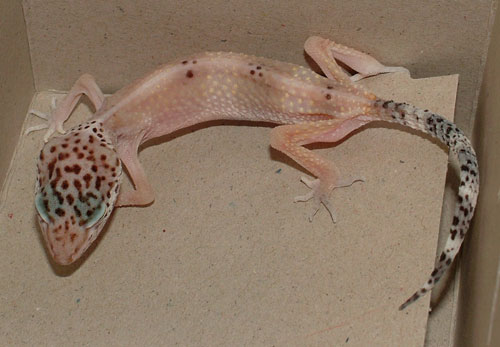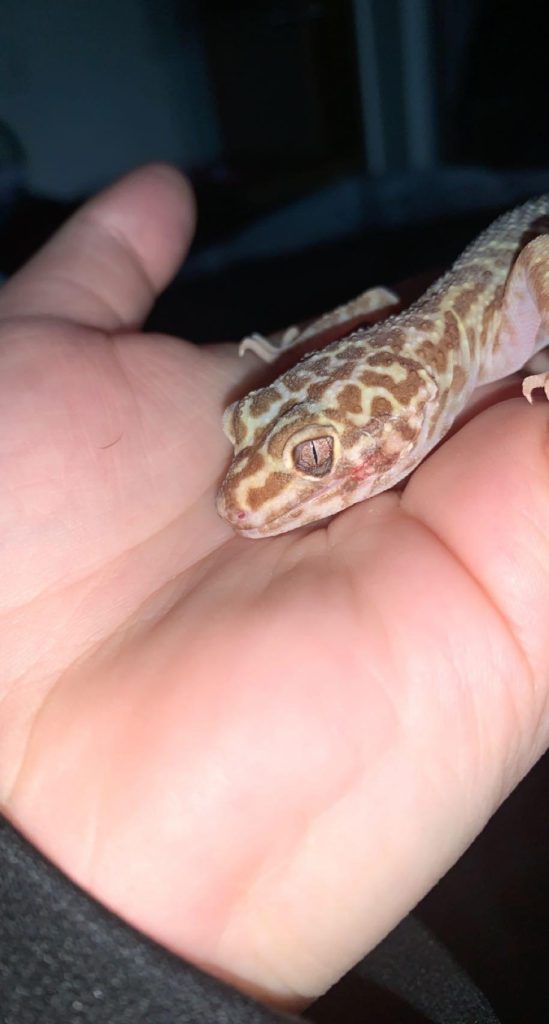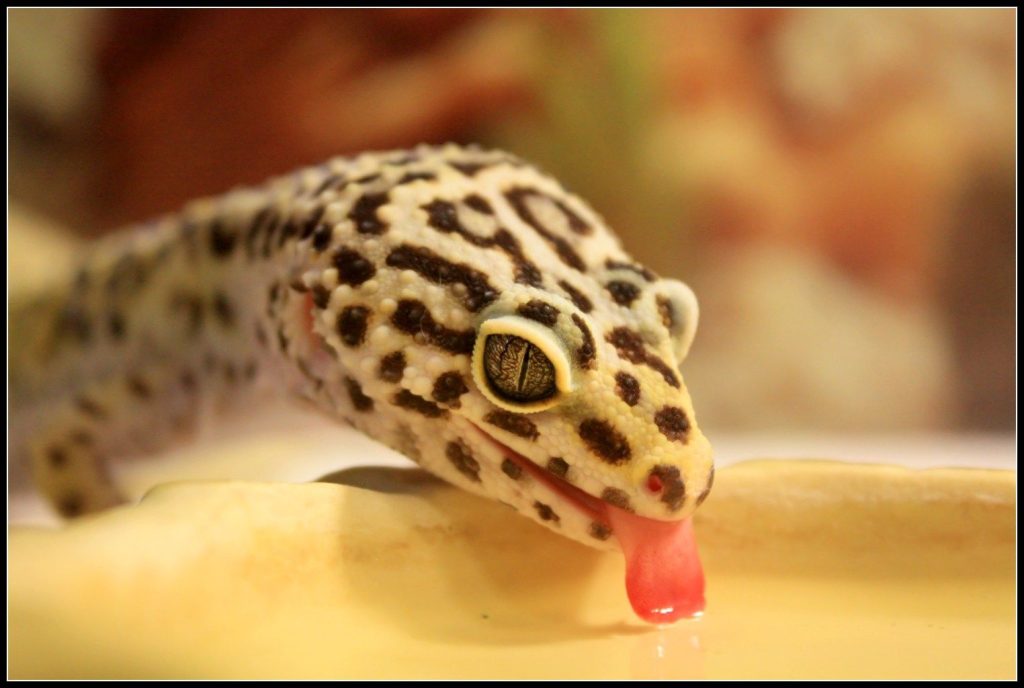Are you the proud owner of a leopard gecko? These captivating reptiles bring joy and fascination to our lives. However, it’s essential to be aware of the signs that indicate your leopard gecko might be in trouble.
In this article, we’ll explore the critical leopard gecko dying signs that every owner should know. By understanding these indicators, you can take prompt action and potentially save your beloved gecko’s life.
Let’s dive in and uncover the warning signs that should never be ignored.
Key Takeaways
- Extreme weight loss, lack/abnormality of droppings, lethargy, sunken eyes, and lack/loss of appetite are signs of a dying leopard gecko.
- Poor diet, parasites, virus, bacterial/parasitic infections, obstruction, and kidney disease can cause weight loss.
- Impaction, parasitical/bacterial infections, and dehydration can be deadly for leopard geckos.
- Prevention is key to keeping leopard geckos healthy, including providing fresh water, varied diet, suitable substrate, consistent temperature, proper lighting, hiding spots, and clean enclosure.
5 Signs Your Leopard Gecko Is Dying
If you’re concerned about your leopard gecko’s health, there are several signs to watch out for that may indicate it’s dying. Extreme weight loss, lack or abnormality of droppings, lethargy, sunken eyes, and lack or loss of appetite are all common symptoms.
These signs may be caused by a variety of issues such as illness, improper diet, or stress. It’s important to seek veterinary care as soon as possible to address any potential health problems and prevent further decline in your pet’s health.
1. Extreme weight loss

You may notice that your leopard gecko is losing an alarming amount of weight in a short period of time, which could be a sign of underlying health issues that may require veterinary attention to prevent the worst outcomes.
Extreme weight loss can be a symptom of a variety of conditions, including a poor diet, parasites, virus, bacterial or parasitic infections, an obstruction, or kidney disease.
In addition to weight loss, these conditions can also cause dehydration, lethargy, and a lack of appetite.
It’s important to address the issue promptly, as losing all the weight will only make them less able to fight off whatever illness is causing the weight loss, and may lead to a higher risk of death.
If you suspect that your leopard gecko is experiencing extreme weight loss, it’s crucial to seek veterinary care immediately to identify the underlying cause and begin appropriate treatment.
2. Lack or Abnormality of Droppings
It can be concerning to see abnormal droppings from your beloved leopard gecko, as it could be an indication of impaction or digestive issues.
If you notice that your leopard gecko’s droppings are absent or different than usual, it’s important to take them to a veterinarian as soon as possible.
To help you understand more about leopard gecko droppings, here is a table detailing the different types, their meanings, and what to do about them:
| Type of Dropping | Meaning | What to do |
|---|---|---|
| Brown, firm, and well-formed | Healthy and normal | No action needed |
| Runny or watery | Possible sign of stress, illness, or poor diet | Monitor and adjust diet and living conditions, seek vet care if necessary |
| Small or infrequent | Possible sign of constipation or impaction | Offer a warm bath and gentle massage, monitor and seek vet care if necessary |
| Bloody or black | Possible sign of injury or infection | Seek vet care immediately |
By understanding the different types of droppings and their meanings, you can better monitor your leopard gecko’s health and prevent any potential issues.
Remember, it’s always better to err on the side of caution and seek veterinary care if you are unsure.
3. Lethargy
Feeling lethargic and lazy is no fun, and the same goes for our scaly friends. When your leopard gecko is acting sluggish and unmotivated, it’s important to take action and seek veterinary care.
Lethargy is one of the most common symptoms related to illness and disease in your leopard gecko.
Lethargy is one of the most common signs of a gecko dying, and it often goes hand in hand with a loss of appetite. If your gecko is not moving around as much as usual, or if they are spending most of their time in their hide, this could be a sign that something is wrong.
It’s important to monitor your gecko closely and take note of any changes in their behavior, as well as any other symptoms they might be exhibiting.
If you notice your gecko acting lethargic, it’s essential to seek veterinary care as soon as possible to give them the best chance of recovery.
4. Sunken Eyes – Leopard Gecko Dying Signs

When sunken eyes appear in a leopard gecko, it could be a sign of dehydration, which is one of the gecko dying signs. Dehydration may occur due to an underlying health issue or lack of water in the tank.
This condition could cause a decrease in appetite and further illness.Other signs of dehydration may include sticky mucus in the mouth and retained non-shedding skin.
As a responsible owner, always keep a clean and fresh water supply in the tank and maintain appropriate humidity levels to prevent dehydration in geckos.
If you observe sunken eyes in your leopard gecko, seek veterinary attention immediately to avoid irreversible damage.
5. Lack or loss of appetite
Now that you’re aware of the sunken eyes as one of the signs that your leopard gecko is dying, let’s move on to another crucial indicator – the lack or loss of appetite.
As mentioned earlier, weight loss and lack of appetite are closely linked to identifying if your leopard gecko is sick. It’s essential to note that a lack of appetite could be an environmental issue, but it could also be a sign of something more serious.
Therefore, it’s best to eliminate all environmental possibilities before you assume your pet is dying. Check the cage’s temperature, eliminate stress factors, and ensure they’re hydrated.
If your leopard gecko still isn’t eating after checking on these things, it’s time to contact the veterinarian. Not eating is something you can’t ignore, so make sure when you feed the animal, they’re at least eating some of the food you provide.
Keep a close eye on your pet’s eating habits, as it could be a crucial indicator of their health.
What Are The Causes of Death of Leopard Geckos?
If you want to ensure your leopard gecko’s health and longevity, you need to be aware of the common causes of death in these reptiles.
One of the most significant risks is impaction, which occurs when a gecko swallows something that obstructs their digestive tract.
Another important factor to consider is temperature: leopard geckos require a warm environment to digest their food and regulate their metabolism.
Parasitical or bacterial infections can also be deadly, causing symptoms such as diarrhea, weight loss, and lethargy.
Finally, dehydration is a serious concern for any reptile, as it can lead to organ failure and death.
Impaction
Impaction is a serious concern for leopard gecko owners, as it can be fatal if left untreated – for instance, a gecko named Spike died due to impaction after consuming a large superworm.
To prevent impaction, it is important to understand the causes and take appropriate measures. Using a soft substrate like paper towels instead of sand or gravel can significantly reduce the risk of impaction.
It is also important to feed appropriately sized insects and avoid insects with hard shells like mealworms and superworms. To help you determine if your leopard gecko may be impacted, take note of the following dying signs: lack of appetite, constipation, bloating, lethargy, and/or straining during bowel movements.
If you suspect your gecko is impacted, take them to a veterinarian immediately. With proper care and attention, you can help prevent impaction and keep your leopard gecko healthy and happy.
| Impaction Prevention Tips |
|---|
| Use soft substrate (e.g. paper towels) |
| Feed appropriately sized insects |
| Avoid hard-shelled insects (e.g. mealworms, superworms) |
| Monitor for dying signs (e.g. lack of appetite, constipation) |
| Take to a veterinarian immediately if suspect impaction |
Wrong temperature
Maintaining the correct temperature in your leopard gecko enclosure is essential for your pet’s health and well-being. If the temperature is too high, your leopard gecko may become overheated and die.
On the other hand, if the temperature is too low, your pet may become lethargic and unable to properly digest food.
Signs of illness due to incorrect temperatures include lack of appetite, weight loss, and lethargy. To prevent these issues, ensure that your enclosure has a temperature gradient of 75°F to 90°F with a basking spot of 95°F.
A thermostat can help regulate the temperature and prevent overheating.
Keep a close eye on the temperature in the enclosure and make adjustments as necessary to keep your leopard gecko healthy and happy. If needed take it to the vet.
Parasitical or bacterial infection
You may not realize it, but your leopard gecko could be at risk for parasitical or bacterial infections that can lead to serious health issues and even death.
Parasites like pin worms, hookworms, coccidia, and Cryptosporidium varanii can invade the intestines and cause weight loss, loss of appetite, diarrhea, and dehydration.
Bacterial infections like salmonellosis, mouth rot, and respiratory infections can affect different organs and cause symptoms like inflammation, ulcers, bleeding, pus, bad odor, and difficulty breathing.
It’s important to keep an eye on any changes in your gecko’s behavior, appetite, weight, and feces as these could be signs of parasitic or bacterial infection.
Prevention is key, so make sure to keep their enclosure clean and hygienic, provide them with a balanced diet, and avoid contact with other sick animals. If you suspect your leopard gecko may have an infection, seek veterinary care immediately.
Dehydration

Make sure to always have fresh water available for your gecko to prevent dehydration, as it can lead to serious health issues and even death. Dehydration can occur when your leopard gecko does not have access to fresh water at all times or when the tank is too dry.
Some warning signs of dehydration include sunken eyes, wrinkled skin, lethargy, and losing weight. In order to prevent dehydration, provide your leopard geckos with a shallow water dish that is cleaned daily and mist their tank occasionally to increase humidity.
It’s important to monitor your gecko’s water intake and behavior to ensure they are not becoming dehydrated. If you notice any of these warning signs, take immediate action by providing fresh water and increasing humidity levels in the tank.
How to Prevent Your Leopard Gecko from Dying

To prevent your leopard gecko from dying, you need to pay close attention to their diet, substrate, temperature, humidity, and lighting.
Make sure to provide a varied diet of live insects dusted with calcium and vitamin supplements, and avoid using hard or loose substrates that can cause impaction.
Maintain a temperature gradient of 75°F to 90°F with a basking spot of 95°F, and a humidity level of 30% to 40%.
Finally, provide appropriate lighting to simulate their natural environment and promote their overall health and well-being.
Diet
Eating a varied diet that includes gut-loaded insects and a calcium supplement is the key to keeping your leopard gecko healthy and thriving.
As a leopard gecko owner, it is important to understand that your pet’s appetite and metabolism are closely linked. Your leopard gecko’s diet should consist of insects such as crickets, mealworms, and waxworms, which should be gut-loaded with nutritious foods before feeding.
A calcium supplement should also be added to their food to ensure they receive the necessary nutrients for proper growth and development.
It is important to monitor your leopard gecko’s eating habits and adjust their diet accordingly, as overfeeding can lead to obesity and other health issues.
By providing a balanced diet, you can prevent your leopard gecko from experiencing health issues related to malnutrition.
| Insects | Nutritional Value | Feeding Frequency |
|---|---|---|
| Crickets | High in protein | Daily |
| Mealworms | High in fat | 2-3 times a week |
| Waxworms | High in calcium | Occasional treat |
In conclusion, understanding the dietary needs of your leopard gecko is crucial for their overall health and well-being. By providing a varied and balanced diet, you can ensure that your pet is receiving the necessary nutrients for optimal growth and development.
Monitoring their appetite and adjusting their diet accordingly can prevent health issues related to malnutrition, and ultimately help your leopard gecko thrive.
Substrate
Choosing the right substrate for your leopard gecko’s enclosure is crucial to their overall health and well-being. A proper substrate will provide a comfortable and safe environment for your pet.
The wrong substrate can lead to various health issues, including respiratory problems and impaction.
Some suitable substrates for leopard geckos include paper towels, reptile carpet, and ceramic tile. Avoid using sand or gravel, as they can cause impaction when ingested. Signs of impaction include lethargy, loss of appetite, and constipation.
Ensure that the substrate is clean and free of any debris or harmful bacteria. Proper substrate choice and maintenance can greatly reduce the risk of your leopard gecko experiencing any dying signs and promote a healthy and happy life for your pet.
Temperature
Maintaining consistent and appropriate temperatures is crucial for the health and well-being of your leopard gecko. These creatures are ectothermic, which means they rely on their environment to regulate their body temperature.
If their surroundings are too hot or too cold, it can lead to a range of health issues, including lethargy, loss of appetite, and even death.
To prevent these signs from occurring, it’s important to monitor the temperature in your gecko’s enclosure using a thermometer and ensure that it stays within the appropriate range of 88-92°F during the day and 70-75°F at night.
You can achieve this by using a heat lamp or under-tank heating pad. It’s also important to create a temperature gradient in the enclosure, with a warm basking spot and cooler areas for your gecko to regulate its body temperature.
By maintaining appropriate temperatures, you can ensure that your leopard gecko stays healthy and happy for years to come.
Humidity
You’ll feel like you’re in a tropical rain forest when you create the perfect humidity level for your leopard gecko’s enclosure. Maintaining appropriate humidity levels is crucial to your gecko’s health and well-being.
These creatures require a humid environment to help them shed their skin, which is an essential process that ensures their skin remains healthy and free from infections. The ideal humidity level for a leopard gecko is between 30 and 40%.
If the humidity is too low, your gecko may experience difficulties shedding, resulting in skin infections. On the other hand, if the humidity is too high, it can lead to respiratory problems, which can be fatal.
Therefore, it is essential to monitor the humidity levels in your gecko’s enclosure regularly.
You can use a hygrometer to check the humidity levels. If you notice any signs of respiratory issues, such as wheezing or labored breathing, it’s time to take action to prevent further complications.
Providing a proper humid environment for your leopard gecko is vital in preventing any potential health issues that may arise due to inadequate humidity levels.
Lighting
Make sure your enclosure has proper lighting to keep your leopard gecko healthy and happy. Lighting is crucial for their overall well-being and can even prevent certain signs of illness that may lead to dying.
Leopard geckos require a specific light cycle to regulate their circadian rhythm and maintain their metabolism.
UVB lighting is also essential for their calcium absorption, which is necessary for healthy bone growth and development.
Without proper lighting, your leopard gecko may experience symptoms such as lethargy, loss of appetite, and weakened immune system, which can lead to more severe health issues.
Therefore, it’s essential to invest in good quality lighting and provide your pet with the appropriate light cycle and exposure to maintain their vitality and avoid any signs of illness.
Hides
To ensure your leopard gecko has a comfortable and stress-free environment, it’s important to provide hiding spots in their enclosure.
Leopard geckos are nocturnal and naturally seek out hiding places during the day to rest and feel secure. Without proper hiding spots, your gecko may become stressed and exhibit dying signs such as lack of appetite, lethargy, and weight loss.
It’s recommended to have at least two hides in the enclosure, one on the warm side and one on the cool side. Hides can be purchased or made from materials such as cardboard boxes or PVC pipes.
It’s important to monitor the hides for cleanliness and replace them if they become soiled.
Providing adequate hiding spots can prevent your leopard gecko from experiencing unnecessary stress and potentially prevent dying signs.
Cleaning
Cleaning the enclosure is an important aspect of leopard gecko care, as it helps maintain a healthy environment for your pet.
For example, Sarah noticed that her gecko’s enclosure was starting to smell and realized it was time to clean out the substrate and disinfect the hides to prevent any potential health issues.
When cleaning your leopard gecko’s enclosure, it is important to use a reptile-safe disinfectant and follow the instructions carefully. You should also remove all uneaten food, feces, and shed skin from the enclosure, as these can harbor harmful bacteria and attract pests.
To make cleaning easier, you can create a schedule based on the size of your enclosure and the number of geckos you have. It is recommended to clean the enclosure thoroughly every 4-6 weeks and spot clean as needed.
By keeping your leopard gecko’s enclosure clean and disinfected, you can prevent common health issues such as respiratory infections and parasites.
Conclusion
In conclusion, being vigilant and attentive to the signs of a dying leopard gecko is crucial for their well-being. Lethargy, loss of appetite, and unusual behavior are common indicators of a sick gecko, but the underlying causes can vary.
Proper husbandry, a nutritious diet, regular veterinary check-ups, and a clean environment are essential for preventing your leopard gecko from succumbing to illness or death.
Remember, prevention is key. By providing the right care and addressing any issues promptly, you can ensure a long and fulfilling life for your leopard gecko.
Cherish your reptile companion and make their health a top priority. With your dedication and commitment, you can enjoy many happy years together.
Frequently Asked Questions
How long do leopard geckos typically live?
Leopard geckos typically live for 10-20 years in captivity if cared for properly. Providing a suitable habitat, balanced diet, and regular health checkups can help ensure a long and healthy life for your pet.
Leopard geckos also die of old age, in which case there’s nothing you can do except ease their suffering as best you can.
Can leopard geckos die from overfeeding?
Leopard geckos can die from overfeeding, as it can lead to obesity, digestive issues, and other health problems. It is important to follow a proper feeding schedule and monitor the gecko’s weight to prevent overfeeding and ensure their overall health and longevity.
What are some common illnesses that can lead to a leopard gecko’s death?
Did you know that bacterial infections are the leading cause of death in leopard geckos? Symptoms include lethargy, lack of appetite, and labored breathing.
Regular cleaning of their environment and proper hygiene can prevent these illnesses. Please taking them to a vet.
Is it normal for leopard geckos to become less active as they age?
As leopard geckos age, they may become less active due to a decrease in energy levels and metabolism. However, this is not always the case and lethargy can be a sign of illness. Regular check-ups and proper care can prevent health issues.
How often should I take my leopard gecko to the veterinarian for check-ups?
It’s recommended to take your leopard gecko to the veterinarian for a check-up once a year. This helps to ensure their overall health and catch any potential issues early on. Regular check-ups can also provide peace of mind for you as a pet owner.



